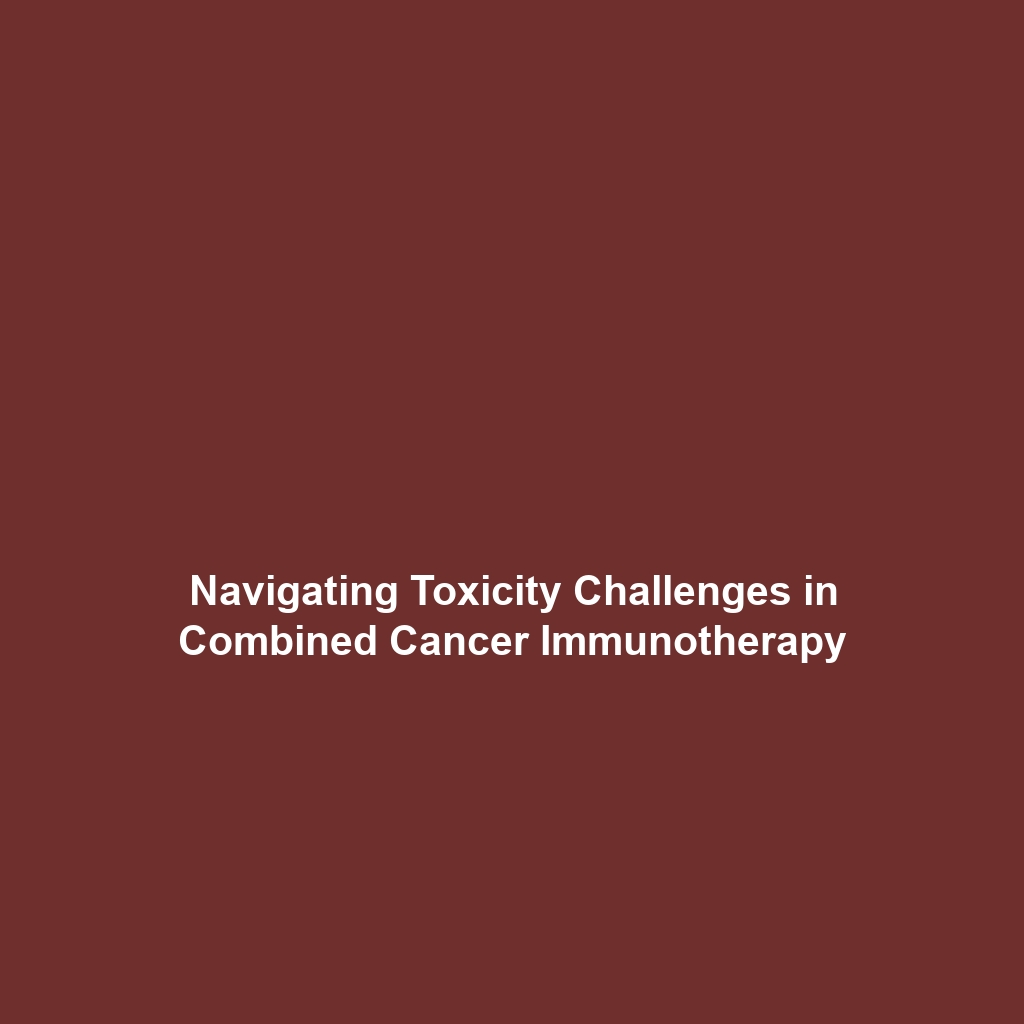Challenges in Balancing the Toxicity of Combined Therapies in Immunotherapy & Cancer
Introduction
The challenges in balancing the toxicity of combined therapies represent a critical focal point in the field of immunotherapy for cancer. As cancer treatments evolve, combining therapies—such as immunotherapy with chemotherapy or radiation—has gained traction for enhancing patient outcomes. However, this strategy often leads to increased toxicity, complicating treatment regimens. Understanding how to manage these toxicities is crucial for optimizing patient care and maximizing therapeutic efficacy.
Key Concepts
Understanding Combined Therapies
Combined therapies leverage the strengths of multiple treatment modalities to combat cancer more effectively. Key concepts include:
- Synergy: The goal is to achieve a synergistic effect where the combination yields better results than individual therapies.
- Toxicity Profiles: Each therapy comes with its particular toxicity profile, necessitating careful assessment.
- Patient-Specific Factors: Factors like genetics, overall health, and previous treatments influence how patients respond to combined therapies.
Applications and Real-World Uses
Understanding the challenges in balancing the toxicity of combined therapies is essential for several real-world applications in immunotherapy & cancer treatment, including:
- Personalized Treatment Plans: Tailoring combinations based on individual toxicity profiles to minimize side effects.
- Clinical Trials: Researching optimal dosage and timing strategies that maximize therapeutic benefits while reducing toxic effects.
- Patient Monitoring: Developing protocols for monitoring adverse effects in patients undergoing combined therapies.
Current Challenges
Despite advancements, several challenges persist in understanding and applying the challenges of balancing toxicity in combined therapies:
- Limited Clinical Data: There is a scarcity of comprehensive data on long-term effects of combined therapies.
- Standardization of Protocols: Lack of standardized treatment protocols complicates efficacy comparisons across studies.
- Patient Variability: The diverse responses among patients introduce complexity in identifying optimal combinations.
Future Research and Innovations
Looking ahead, innovations in balancing toxicity of combined therapies could reshape the landscape of immunotherapy & cancer. Key areas of focus include:
- Biomarker Development: Research into biomarkers that predict toxicity responses could facilitate personalized treatment approaches.
- Next-Generation Treatments: The emergence of targeted therapies that specifically mitigate adverse effects while enhancing immune responses.
- Advanced Analytical Tools: Innovations in data analytics for real-time monitoring of treatment efficacy and toxicity.
Conclusion
As we explore the challenges in balancing the toxicity of combined therapies, it is evident that understanding and addressing these issues is integral to advancing immunotherapy & cancer treatment. For healthcare providers and researchers alike, continued exploration in this domain will lead to better patient outcomes. To learn more about innovative cancer treatment strategies, visit our cancer research section.
